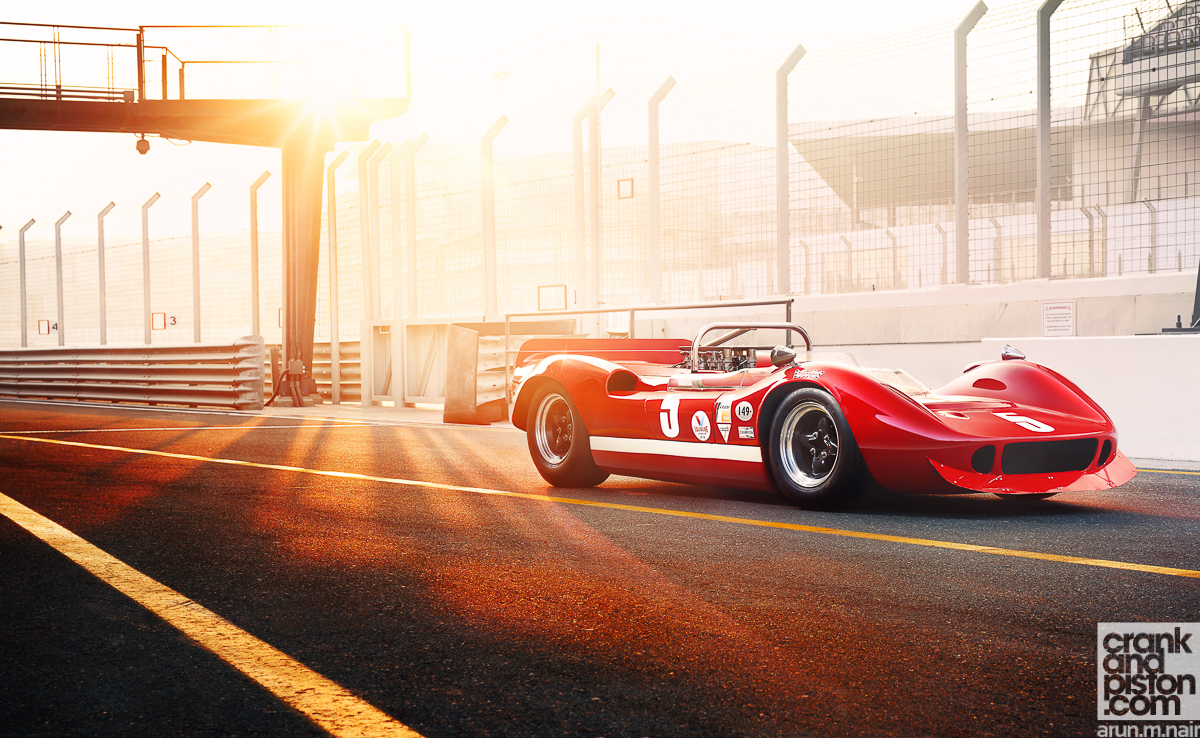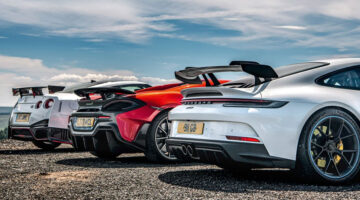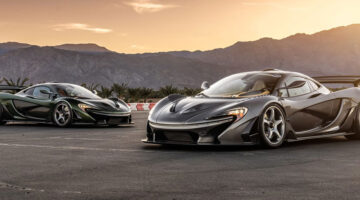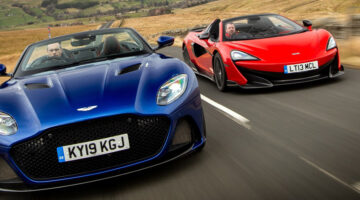Now, just so we’re clear, this is your own ACTUAL car. An extremely rare, classic Can-Am racer that you’ve decided not to keep under lock and key with armed security…
“You should see me driving it! I’ve actually raced this car a few times at the Goodwood Revival, and that’s a proper old school racetrack complete with all the amazing safety standards that existed in the 1960s! And around that track, that car reaches over 175mph [280kph], so a few photographers in the Middle East isn’t that much of a concern!”
Tell us how you came about the car…
“Well, I bought the car because years ago, I thought it would be a really good idea to try and own a piece of McLaren history before McLaren became what it is today. I also thought it would be quite cool to do some historic car racing, and the only McLaren that came to mind was the M1B, because that can race at the Goodwood Revival. But it’s a car that also stands for a lot of what McLaren is.
“It was built at the beginning of 1966, and was one of only two. The sister car doesn’t exist anymore though, so this is actually the sole surviving team car. At the time, it was the fastest car on the planet. Faster even than Formula 1, given that Can-Am [Canadian American Challenge Cup series] was an unlimited formula where anything goes. So I searched the world for one, and found this, chassis #1. So this is the first M1B Can-Am McLaren ever produced.”
It must have quite an amazing history attached to it…
“Oh yes. Chris Amon and Bruce McLaren both drove it. Of course, Chris [Amon] was a very quick driver and he actually led the first ever Can-Am race, had a spin, caught up, and finished second. McLaren went on to score several more podiums that first season too. So the car was quite successful, very quick, but McLaren learned, and then year two the team came back with the M6, and later the M8, which both dominated.
“This car carried on racing after that, racing in Can-Am the following year with Mike Spence and Ross de St. Croix, won the Canadian Sports Car Championship in 1966, but didn’t do much after that. By the late 1960s, McLaren had commissioned Trojan to build a batch of cars to be sold to customers. I looked at a few of them, but decided against them in the end. This one is genuine, it has the history behind it, and so is a million times more valuable. It has the unique history that none of the others do.”
So where did you finally track it down?
“It took a year and a half to go through the process, but I finally found this in California, USA. The owner had bought it at auction and just held onto it for several years. But he sent me some images and documentation to prove it was the genuine article, and when we’d confirmed that, I put my old man on a plane to go check it out. I actually bought this car having never seen it! It’s just a wonderful thing to own, but it’s even more wonderful to drive.”
You mentioned you’d wanted to do some historic racing…
“The Revival is quite a big thing for McLaren too, Goodwood being a local event. Plus, 1966 is the cut-off point. It’s just a fun historic race – I’ve won it a few times now – because owners want to win, and I’ve had some enormous names to beat. It’s one of the most competitive races I’ve ever done, and I’m there, driving my retirement plan between solid earth banks, skating around on solid tyres with no downforce. You are WAY to busy to worry about that though.
“Cars should be used – it’s the reason I bought this – and the M1B has taught me a lot. It’s just a thrill to drive, and I’ve tried very hard to inject the sensation I get from this Can-Am car into McLaren’s road cars.”
That’s a hell of a benchmark…
“It is, but there are degrees to it. It’s a flavour rather than a replication of the Can-Am and sports cars in particular. That’s a key ingredient. Let’s not worry about lap times, let’s concentrate on the experience, because that is what the M1B really, truly offers you. When it was built, it represented the maximum of everything, and there was some amazing innovation during that period. It lived in our old factory, it was pushed around by the mechanics in their old overalls, and I’ve got photographs of the car testing at Brands Hatch – before I was even born – and images of Bruce himself working on the chassis, just tweaking and fine-tuning. There’s noises and feelings, sensations, and you’ve got a power-to-grip balance that’s unlike anything else. I want people to have a degree of that when they get out of one of our cars. Certainly we slanted the flavour of the P1 from that.”
Does owning an M1B hold more significance to you now, given that neither Bruce McLaren nor Chris Amon is with us today…
“Yeah, absolutely. There was some amazing drivers during that period, and these were the most lucrative, most competitive, most technologically advanced cars racing by far: the amount of money some people could throw at that today would be incredible, and unsustainable. Guys like Jackie Stewart and Bruce McLaren, they raced in Formula 1 but they were earning their living in Can-Am. They certainly earned more money there. It was definitely the place to be.
“So yeah, it’s one of those rare, physic connections. I’ve spent my life reading about these guys, learning how to drive and race. Yes, it’s different eras, but I can relate to it. I know what it’s like to go to Watkins Glenn or Laguna Seca and try to set a car up. I know some of the struggles it takes to get a machine like this to handle. I’ve become addicted to them now. I actually have another McLaren Can-Am project in the works – it’s two years younger than this one – which we’re just finishing which I’m looking to race in the FIS Historic championship. Definitely the M1B is a car for life.”






